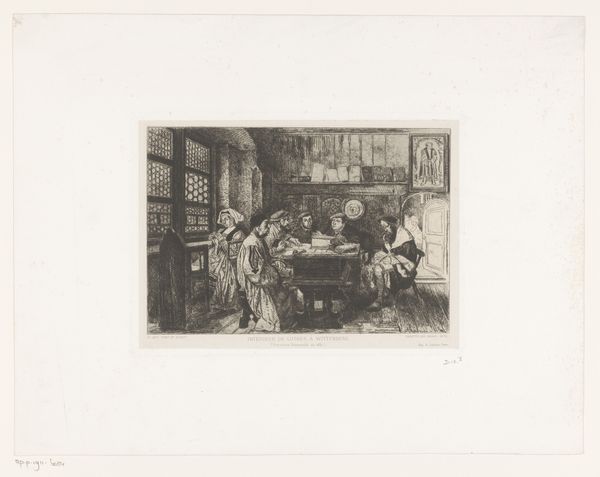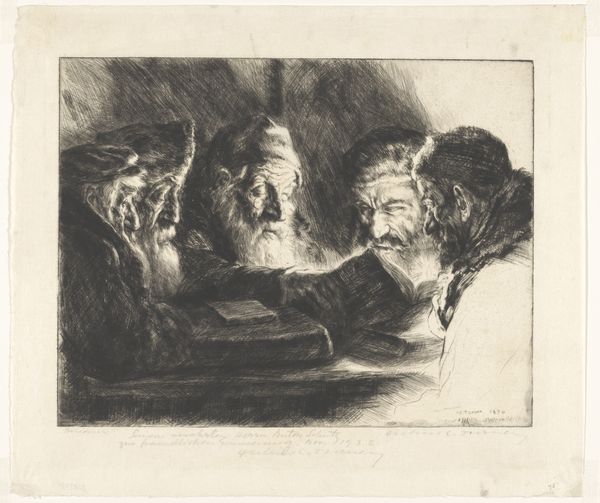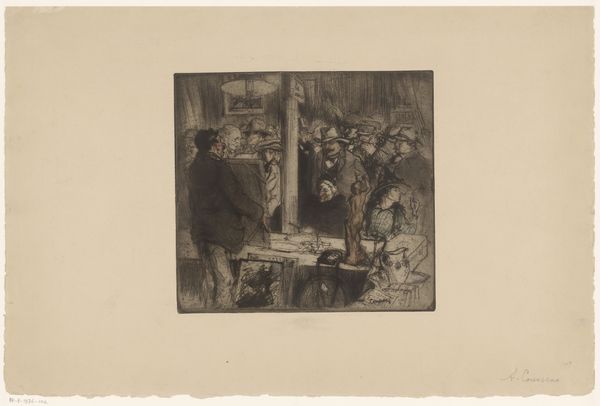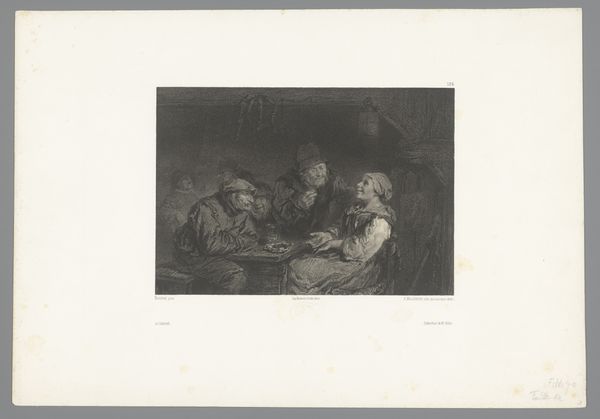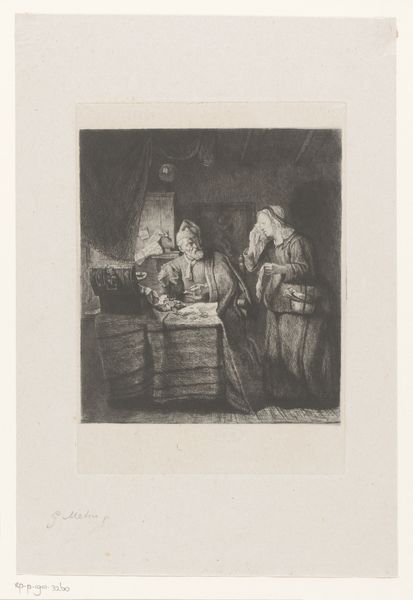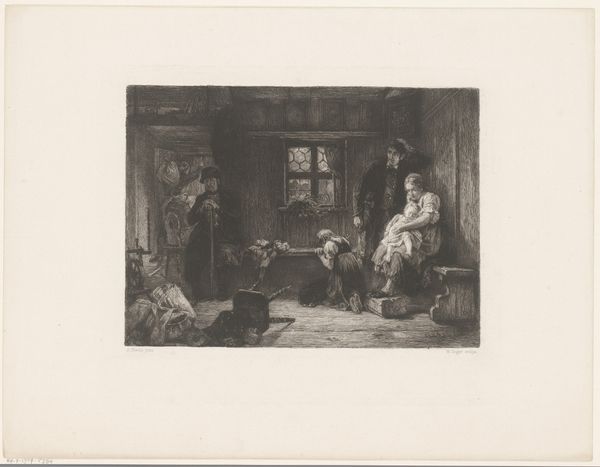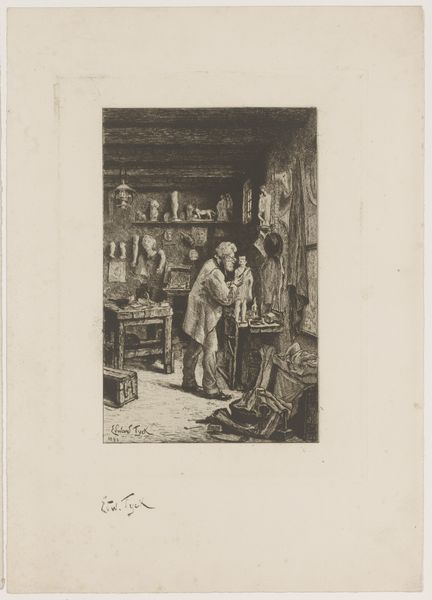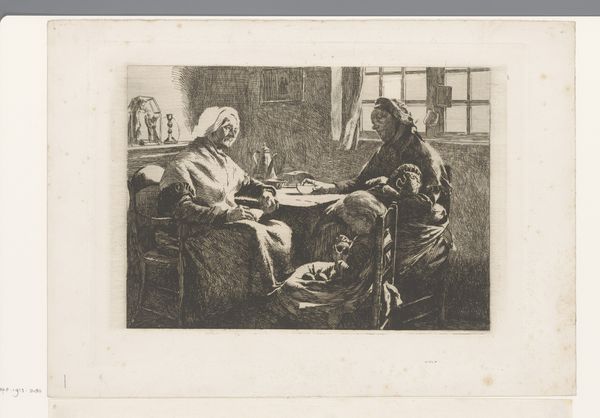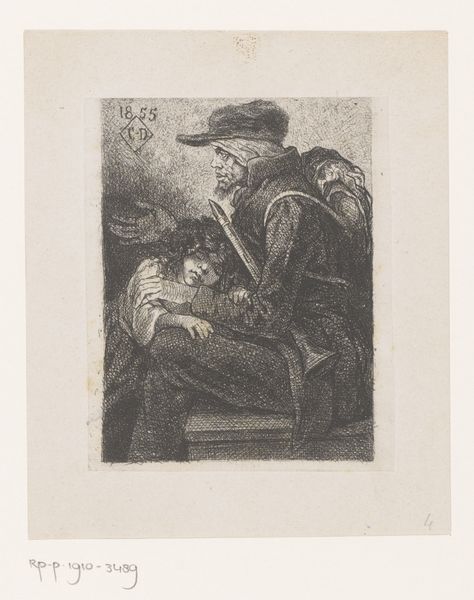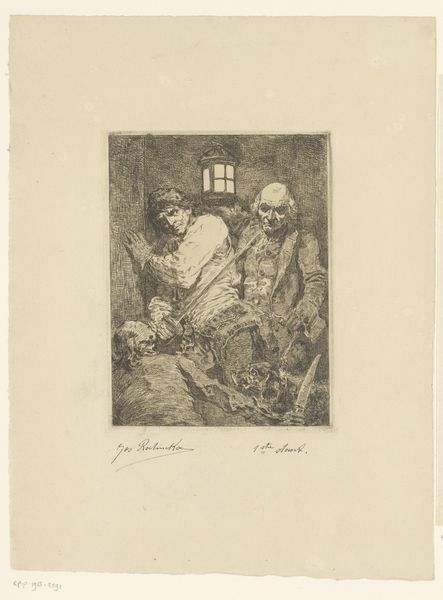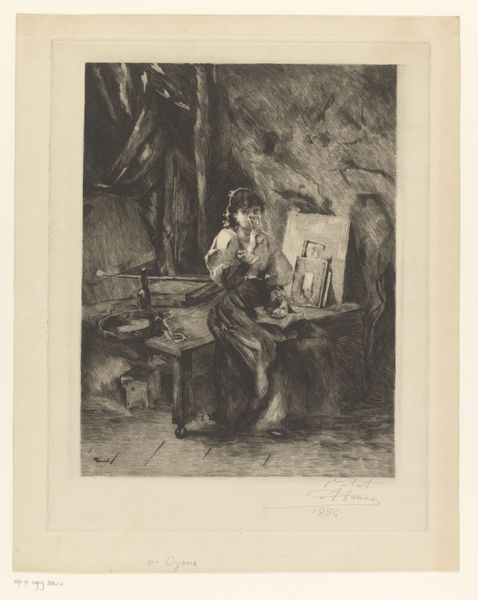
drawing, print, etching, paper
#
portrait
#
drawing
# print
#
etching
#
paper
#
genre-painting
#
realism
Dimensions: height 239 mm, width 319 mm
Copyright: Rijks Museum: Open Domain
Curator: This print by Léon Brunin, dating back to 1891, offers a glimpse into a casual moment between two gentlemen indoors. It’s an etching on paper, reflecting everyday life. What's your immediate take? Editor: It strikes me as quiet, almost melancholic. The figures seem deeply absorbed, shrouded in shadow, creating an intimate and perhaps slightly somber atmosphere. The monochrome is striking, creating a narrow, focused vision. Curator: Brunin, as part of the Realist movement, aimed to capture life authentically, stripping away romantic idealizations. The etching medium itself is significant; its accessibility made art more democratic, reflecting a shift in art's relationship to social class. Who had access to this process and knowledge, and what narratives does that permit? Editor: Exactly, the materials tell a story of production and circulation. Etchings allowed for multiples, making art affordable. We need to also think about the kind of labor required—the crafting of the plate, the press. It points to a society that valued artisanal skill, a world rapidly changing due to industrialization. This is manual labor memorialized through images made using hand operated presses. Curator: Right, and the choice of subject is far from neutral. The leisure time of men is coded with societal meaning in the late 19th century. Who are these men? What privileges allow them this undisturbed time? And how does it tie in to the brewing tensions regarding class in that period? Editor: The men are likely members of the bourgeois class, a class defined by capital and leisure. This interior scene, though seemingly mundane, reflects power dynamics—who gets to relax, smoke, and engage in quiet conversation in the comfort of their own space? I am interested in that clay pitcher—functional and beautifully wrought—a humble centerpiece. Curator: The use of shadow contributes to a feeling of concealment, which I would argue reflects on bourgeois existence. Their wealth and time for recreation were afforded by exploited classes. There are quiet disruptions always threatening stability—can we interpret those subtle hints here? Editor: It makes you reconsider the scene. It’s not just an innocent portrayal; it's a document reflecting a certain power structure. The material choices of creating the piece become inextricably linked with a portrait of a moment in social history, full of inequalities, and, potentially, precarity. Curator: This artwork then can make us aware that we're viewing not just an image but a constellation of social and material histories, all captured through a specific lens and produced in a context ripe for radical social change. Editor: Precisely, Brunin gives us more than just a scene; it is an etching into our own assumptions about comfort, class, and the stories objects tell.
Comments
No comments
Be the first to comment and join the conversation on the ultimate creative platform.

